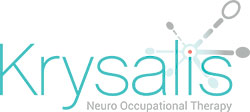SASNOS scale detects challenging behaviour after brain injury

When is challenging behaviour linked to brain injury? Here’s a Welsh way for neuro OTs and brain injury survivors to find out.
 Challenging behaviour symptomatic of NBD is a greater impediment to community reintegration than chronic physical disability.
Challenging behaviour symptomatic of NBD is a greater impediment to community reintegration than chronic physical disability. 
Prof Nick Alderman [1]
Trust the Welsh to inspire new ways of thinking.
You only need to turn to Tredegar on the banks of the Sirhowy River in southeast Wales [2] to see why.
In the late 19th Century, the town developed a ground-breaking medical aid society.
The society provided healthcare, free at the point of use, to people who signed up and paid a small, weekly fee as members.
It was a scheme that would influence Tredegar-born Aneurin Bevan to create the UK’s National Health Service (NHS) in 1948.
Fast forward 73 years and, rooted in the research beds of Swansea University over 40 miles west, another ‘medical aid’ idea is fast gaining ground.
Only this time, the scope is global.
And the target is a composite of brain injury symptoms that, historically, has presented society with one of its biggest-ever rehabilitation challenges.
Scale-up
Suggestive of a space satellite, SASNOS - St Andrew’s-Swansea Neurobehavioural Outcome Scale – has been monitoring brain injury communities worldwide now for 10 years.
Since 2011 it’s been used for clinical and research purposes in Australia, Canada, Demark, Spain, The Netherlands, Ireland and New Zealand. [3]
SASNOS scans for neurobehavioural disability (NBD) – a combination of enduring symptoms arising from a brain injury that can impact heavily on rehabilitation, particularly social integration.
In an Expert Review editorial [1], SASNOS researcher and Swansea University Honorary Professor Nick Alderman described NBD as a cause of “severe chronic social handicap”.
He added: “This complex pattern of disability is the product of interactions between damaged neural systems and neurocognitive impairment, further modified by premorbid personality traits and post-injury learning.
“NBD imposes serious constraints on psychosocial recovery; behaviour disorders are enduring, create severe difficulties for families and are associated with poor engagement in rehabilitation.
“Challenging behaviour symptomatic of NBD is a greater impediment to community reintegration than chronic physical disability.”
Facts and stats
SASNOS was developed to identify the key signs of NBD, including:
- Personality changes.
- Mood swings.
- Problems with attention.
- Executive dysfunction.
- Poor insight.
- Problems with awareness and judgement.
- Reduced impulse control.
In basic terms, this may mean non-verbally, verbally or physically challenging behaviour such as:
- Shouting and swearing.
- Appearing as threatening.
- Physical aggression.
- Inappropriate touching.
- Offensive speech.
- Self-harm.
A SASNOS assessment comprises 49 items covering all the main NBD areas:
- Communication.
- Interpersonal behaviour.
- Cognition.
- Aggression.
- Inhibition.
The process involves assessments of a survivor by the survivor, family members, carers, and health professionals to reflect problems as accurately as possible.
Evidence from direct observation, interviewing, questionnaires, and rating scales can then be used to shape targeted neurorehabilitation plans.
Virtual support for SASNOS users is provided, and an annual conference helps raise awareness of its impact.
 Given the potentially catastrophic impact of NBD, it is essential appropriate tools are available to enable the assessment of people with ABI to ensure timely delivery of services.
Given the potentially catastrophic impact of NBD, it is essential appropriate tools are available to enable the assessment of people with ABI to ensure timely delivery of services. 
Prof Nick Alderman [1]
Free for all
SASNOS study findings published last week showed NBD was ‘highly characteristic’ among a research group of 97 survivors with traumatic brain injury (TBI). [4]
While an earlier two-year SASNOS scan of neurobehavioral difficulties in neurorehabilitation outpatients in Denmark revealed, a quarter of them were having problems interacting with others and with cognition. [5]
The Danish trial – using a Danish version of SASNOS – featured in a 2019 overview of research examining factors affecting TBI survivors’ participation in daily life and work. [6]
The authors noted SASNOS unveiled ‘significant’ evidence that could impact the success rate of neurorehabilitation.
The authors noted SASNOS unveiled ‘significant’ evidence that could impact the success rate of neurorehabilitation.
SASNOS is freely available for clinicians, service managers, commissioners, and researchers. Further information here: SASNOS Home
Related articles
Brain injury and complex behaviour in the community setting.
Family Matters - Recognising the complex needs of families living with brain injury.
Neuro OT: Seeing complex behaviour through different glasses.
The latest from talking heads ...
References
[1] Alderman, N., "Challenges and importance of measuring neurobehavioural disability in acquired brain injury: the ‘St Andrew’s Swansea –Neurobehavioural Outcomes Scale’ (SASNOS)," Expert Review of Neurotherapeutics, 2018.
[2] The Conversation: NHS was not solely modelled on a Welsh workmen's medical society.
[3] SASNOS Project
[4] Alderman, N., Williams, C., LLewellyn Wood, R., "Using the St Andrew’s – Swansea Neurobehavioural Outcome Scale (SASNOS) to determine prevalence and predictors of neurobehavioural disability amongst survivors with traumatic brain injury in the community," Neuropsychological Rehabilitation, June 2021.
[5] Soendergaard, P. L. et al, "Measuring Neurobehavioral Disabilities Among Severe Brain Injury Survivors: Reports of Survivors and Proxies in the Chronic Phase," Frontiers in Neurology, February 2019.
[6] Andelic, N. et al, "Editorial: Impact of Traumatic Brain Injuries on Participation in Daily Life and Work: Recent Research and Future Directions," Frontiers in Neurology, November 2019.




